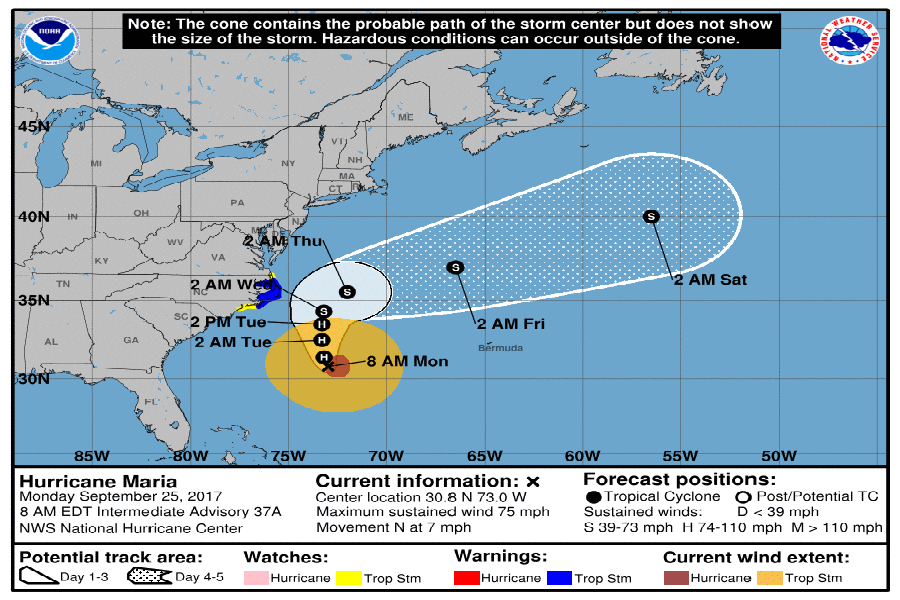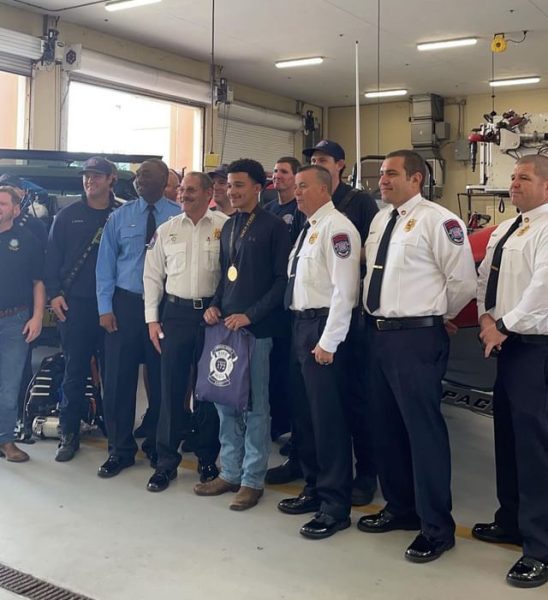Hurricane Maria
September 26, 2017
Hurricane Maria was a category five hurricane when it devastated the island of Dominica last Monday night, September 18th. This hurricane is the strongest to be recorded to hit this island.
Winds were recorded reaching up to 160 mph as it traveled west-northwest at nine mph. The storm once again became a category five hurricane after losing force while over Dominica. Hurricane-force winds spanned about 30 miles while tropical-storm-force winds spanned about 125 miles.
Puerto Rico was hit by the storm, which started Tuesday night and continued through Wednesday morning. This has been one of the strongest storms that Puerto Rico has met in the past 85 years. Governor of Puerto Rico, Ricardo Rossello, declared a state emergency in preparation for the expected devastation. The city of Yabucoa was the first to feel pressure of high winds.
The entire island was left without power, leaving horrible conditions. This storm was met after destruction was brought by hurricane Irma, therefore causing ‘apocalyptic’ conditions as officials described it. At least 10 were confirmed to be killed by Governor Ricardo Rossello. Another major threat to the safety of citizens is the possibility of an influential dam collapsing due to high tension from excess water. It has been confirmed that roughly 4,000 members of the US Army Reserves have been sent to aid residents of the island.
The next location expected to be hit by Hurricane Maria is North Carolina. Flooding, winds, and rip currents will hit the shores causing closures along the coast. The storm is 350 miles south of Hatteras, NC while moving five to ten miles per hour north. The state is fortunate enough to encounter the storm while winds settled down to roughly 80 miles per hour.












